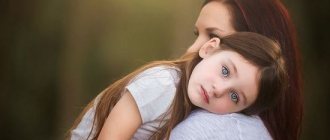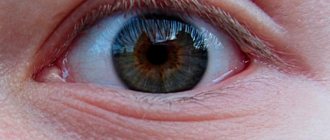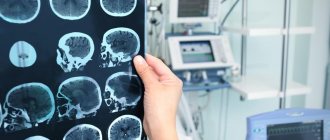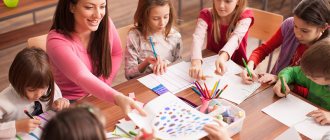We grew up and began to forget what it was like to be children. Meanwhile, children live their emotionally rich lives. Their lives have everything: love, hatred, betrayal, unloved activities, strict bosses, restrictions imposed by society and much more. And they encounter many of this for the first time, and how they cope with all this will leave their own unique imprint of experience on them, which they will carry throughout their lives.
Perhaps there is nothing wrong with this. Perhaps difficulties will temper and strengthen their spirit and will to win. After all, we somehow survived childhood, now we are not afraid of the school teacher, and we can subject the “bully” at work to disciplinary sanctions and other “executions” by senior management. In the worst case, we can move and change the entire way of our life, finding ourselves in our favorite activity. Only a child does not have such an opportunity.
Children can experience their daily routine as repetitive hell. Where they are forced to be in a group of people who are unpleasant to them, to engage in activities in which they do not see the point, to languish from boring circles and sections in which their parents enrolled them for their own good. This can be comparable to moving to a new branch of work, from which a long-term contract does not allow you to leave. A job in which management demands meaningless and constantly changing reports, where the established team despises newcomers, where it is customary to take overwhelming amounts of work home, and at home they begin to evaluate you based on the characteristics of that very job. And all this leads to fatigue and irritability. To that form of neurosis, which is popularly dubbed “irritable weakness” or neurasthenia.
What are neuroses in children
Neuroses in children and adolescents are a group of reversible borderline disorders of the nervous system that arise due to the influence of a psychotropic factor.
Traumatic factors include interpersonal and intrapersonal conflicts, stress, excessive mental and physical activity. Neuroses in children develop in 35% of all children attending preschool institutions. The largest number is observed in children of senior and primary school age, as well as preschool children, while it is more common among boys than among girls.
The manifestation of neuroses in children is mainly associated with a violation of the psycho-emotional sphere and occurs from 3-16 years. With the development of such a borderline state, there are no increasing changes in personality or dementia.
Treatment of neurasthenia in adolescents
Asthenia, predominantly of psychogenic origin, is very common in childhood and adolescent practice. This condition is commonly called neurasthenia. A number of authors consider it impossible for asthenia to occur under the influence of only psychological or only biological factors. Thus, A. Kreindler (1963), speaking about the psychogenic nature of asthenia, recognizes the importance of cerebrogenic, somatogenic factors in the development of the disease [4]. On the other hand, the importance of psychotraumatic influences for the formation of cerebrogenic and somatogenic asthenia is emphasized. Somatic diseases can reduce the threshold of sensitivity to psychogenicity.
Severe manifestations of neurasthenia occur more often against the background of somatic weakness. Their manifestation is facilitated by the presence of long-term or constant conflicts in the family, and the wrong (very tough and demanding) type of child upbringing. The psychological genesis of neurasthenia lies in the contradiction between inflated self-esteem and great aspirations, on the one hand, and reality, on the other hand. In this regard, it is worth noting the intrapersonal conflict of the type “I want, but I can’t” or “I want, but I’m sick,” which underlies neurasthenia [5].
The goals of this study were to clarify the clinical picture of neurasthenia in adolescents with school maladaptation and to evaluate the effectiveness of the use of the drug Nooclerin (deanol aceglumate) in the treatment of this pathology. Nooclerin has cerebroprotective properties with a distinct nootropic, psychostimulating and psychoharmonizing effect in asthenic conditions and memory disorders of various origins.
Materials and research methods
Under our supervision were 64 teenagers aged 14–17 years, residents of St. Petersburg, who went to the doctor with complaints of fatigue and poor performance at school. Among them there were 30 (46.9%) boys and 32 (53.1%) girls. The diagnosis was made based on ICD-10 criteria. To objectify the severity of asthenic disorders and their dynamics during the treatment process, a subjective asthenia rating scale (MFI-20) with 5 subscales was used. The intensity of fatigue was assessed using a visual analogue scale (VAS) (10-point version).
The level of anxiety was assessed using the self-esteem test by Ch. D. Spielberger, processed by Yu. L. Khanin.
Vegetological examination was carried out using the questionnaire of A. M. Vein (1991). Headaches were diagnosed according to the criteria of the International Headache Society (IHS-1988). The intensity of cephalgia was assessed using a VAS (10-point version).
Electroencephalography (EEG) was recorded from 19 electrodes located on the surface of the head in accordance with the international 10–20 system, at rest with eyes closed and open (3 min each). To control eye movements, an electrooculogram was recorded. Absolute EEG power was calculated and compared between groups of subjects in the θ- (4–7 Hz), α1- (7–12 Hz), β1- (14–20 Hz), β2- (20–30 Hz) ranges.
In addition, a psychophysiological study was conducted using TOVA (the Test of Variables of Attention), a continuous activity test that allows assessing the state of attention and the level of impulsivity in relation to normative data for each age. The test is based on presenting to the subject in random order significant (requiring a response) and insignificant (not requiring a response) stimuli that appear on the computer screen in the form of geometric shapes. The results of the study made it possible to quantify the degree of inattention (errors in missing significant stimuli), the level of impulsivity (errors in responding to insignificant stimuli) and the speed of information processing (response time) and stability of responses (response time dispersion).
Adolescents from the study group took the drug Nooclerin at a dose of 2 g/day (1 tsp. 2 times/day - morning and afternoon) for 1 month. No other therapy was administered during this period. The effectiveness of therapy was analyzed in a control study conducted after 1 month. after completion of the course of treatment. The proportion of responders was determined by the number of patients whose initial indicators of general asthenia (MFI-20) decreased by more than a third.
The control group consisted of 64 practically healthy adolescents.
Research results
The clinical picture in patients from the study group was characterized by polymorphic clinical manifestations and severe asthenic symptoms (Table 1, Fig. 1). The greatest severity of asthenia was noted in the following subscales: “reduced activity”, “general asthenia”, “decreased motivation”. It should be noted that these complaints arose during the school day and did not go away after rest. Increased sensitivity to external stimuli and to sensations from internal organs was recorded, which was reflected in numerous somatic complaints. Actually asthenic phenomena (general weakness, fatigue, exhaustion, lethargy, daytime sleepiness) were combined with comorbid disorders. The quantitative assessment of asthenic disorders is reflected in the diagram (Fig. 1).
Thus, in 52 cases (81.3%) patients from the study group had bilateral diffuse headaches of a pressing, compressive nature. Cephalgia occurred mainly in the 2nd half of the day and did not intensify during daily physical activity. In accordance with the criteria of ICD-10 and IHS-2003, we defined such cephalgia as tension headache (TTH).
Depending on the frequency of headache attacks, 2 groups were divided: adolescents with a frequent (episodic) form of tension-type headache (CHTH) and adolescents with a chronic form of tension-type headache (CHTH).
CHFN was recorded in 30 cases (46.9% of the total number of patients). The frequency of headache attacks was 3–10 rubles/month. These attacks, as a rule, occurred against the background of traumatic circumstances and stress. CHF was diagnosed in 22 cases (34.4% of the total number of patients). Adolescents in this group experienced headaches from 4 to 7 times a week, more often on weekdays, after school. Provoking factors were overwork and prolonged mental stress. The average intensity of cephalgia is presented in Table 1.
According to the vegetological examination using the questionnaire method of A. M. Vein, the average score for adolescents from the study group was 19.5 ± 5.6 (with a norm of up to 15 points).
The average level of reactive anxiety was 43.6±7.5 points; the average level of personal anxiety is 39.2±7.9 points (according to normative data, an increased level of anxiety is stated when the indicators are more than 30 points).
The psychophysiological TOVA study showed that patients in the study group had increases in inattention, impulsivity, and reaction time compared with the corresponding indicators in the control group. Noteworthy was the significant increase in the number of errors and the increase in reaction time in the 2nd half of the test (Table 2).
The results of quantitative EEG indicated that the bioelectric activity of the brain in adolescents with neurasthenia was characterized by a significant decrease in the spectral power of the α rhythm in the occipital leads compared with the corresponding indicator in the control group (Table 3).
Evaluation of treatment results showed that the proportion of responders after a course of Nooclerin was 68.8% (44 patients). In conversations with adolescents and their parents, a decrease in fatigue, improvement in attention, and memory were noted from 2–3 weeks. taking the drug. The proportion of non-responders was 28.1% (9 patients). It should be noted that the absence of dynamics was recorded in patients with a very high level of anxiety. When assessing the patients' condition using MFI-20, a significant improvement in indicators was recorded on the scales of general asthenia, mental asthenia, and decreased activity (Fig. 1). No significant improvement was recorded on the motivation reduction scale. In addition, there was a decrease in headache intensity in 17 patients (32.7% of all patients with cephalgia). Improvement was obtained in 6 patients with PCTH and 11 patients with CHF. There was a trend towards a decrease in average pain intensity after treatment, especially in chronic headache. This indicator was 4.1±2.9 points. The results of a repeated vegetological examination showed a significant decrease in this indicator after a course of Nooclerin (Table 1).
Tolerability of therapy in the main group can generally be characterized as good. In 3 cases there were complaints of difficulty falling asleep. After 3–4 days, the sleep of these patients returned to normal on their own, without drug correction. No other side effects were noted.
A repeated psychophysiological study after the course revealed a statistically significant decrease in inattention, impulsivity and reaction time (Table 2). There was also no significant reduction in anxiety.
Data from an electroencephalographic study after a course of Nooclerin showed that significant clinical improvement was accompanied by a restructuring of the rhythmic structure of the EEG. A comparative analysis of the results of an electroencephalographic study showed that after completing the course of Nooclerin, a significant increase in the power of the α-rhythm in the occipital regions was recorded (Table 3).
Discussion
A feature of recent asthenic disorders is the undoubted increase in somatization, and one of the most common forms of somatization disorders is called hypertension [6]. The results of the vegetological examination showed that the average score in patients with neurasthenia indicated the presence of autonomic dysfunction and was significantly higher than in the group of healthy subjects. Psychophysiological research data indicate a decrease in the level of attention and reaction speed in adolescents with neurasthenia.
When analyzing the functional state of the nervous system, great importance is attached to the α-activity of the brain, which characterizes the state of relaxed wakefulness. Conducted studies show that adolescents with neurasthenia are characterized by lower values of α-rhythm power in the occipital leads compared to healthy peers, which indicates a deterioration in the functional state of the brain.
The use of Nooclerin in the treatment of asthenic manifestations against the background of school maladaptation is characterized by high efficiency. After treatment, there was a significant decrease in fatigue and asthenia. The greatest improvement was obtained on the scales of general and mental asthenia. It should be noted that positive changes appeared quite quickly.
The results of repeated psychophysiological and neurophysiological studies after a course of Nooclerin confirm clinical data on a decrease in the degree of exhaustion and an improvement in the functional state of the brain after treatment. It is important that the use of Nooclerin is not accompanied by significant unwanted side effects and complications.
It should be noted that after completing the course of Nooclerin, there is a decrease in comorbid disorders such as vegetative-vascular dystonia and tension-type headache. A greater effect was achieved in the treatment of chronic hypertension. This observation can be explained by our previous studies, which showed that if CGTH is more combined with anxiety disorders, then CGTH is often found in children with asthenic disorders [7].
A limitation of this study is the lack of long-term follow-up.
Thus, the use of the drug Nooclerin in the treatment of asthenic disorders in adolescents is highly effective. Considering the lack of effect of Nooclerin on anxiety, it can be assumed that the effectiveness of its use in combination with non-benzodiazepine anxiolytics will increase.
Causes of neuroses in children
The causes of neuroses in children are very diverse, but the most common are family-related ones. Often, conflicts within the home, disharmony in the family, emotional stress and formed mental trauma lead to the state of “neurosis in a child.” Symptoms develop due to the inability of the baby to survive this situation.
The causes of neuroses in children can also arise from intrapersonal conflicts, when there is a contradiction between drives and prohibitive actions. Perhaps neuroses in children arise as a defensive reaction to stress in the body.
Factors that form neuroses in adolescents include psychological predisposition. Certain personality traits, for example, the hysterical type, can shape the development of changes in the nervous system in unfavorable social conditions.
Neuroses in preschool children are often formed as a result of hereditary factors, injuries and diseases. The course of childbirth and pregnancy also plays a big role in defining the concept of neurosis in a child. Symptoms depend on the cause, conditions, age and rate of development of the condition.
Advantages of treating childhood neuroses in our clinic
- We use safe methods
. We prescribe medications that are safe for children. We select psychotherapy methods designed for children’s perceptions and treat them in a playful way. - We discuss treatment with parents
. We talk about the upcoming treatment, possible risks and complications. If parents are against medications, we discuss the possibility of psychotherapeutic treatment. - We provide consultations with parents
. We conduct sessions with a psychotherapist in the presence of parents to reduce stress for the child. - We issue certificates to the school
. If the child does not attend school during treatment, we provide a certificate.
You can find out more about how our child psychiatrist conducts consultations here.
To make an appointment for your child at the ROSA clinic, call. You can ask your doctor questions online using the feedback form at the top.
Symptoms of neuroses in children
Neuroses in children have their own characteristics.
They are incomplete, residual with a predominance of somatovegetative disorders.
We can distinguish several groups of obsessions (thoughts, fears, actions), supervaluable ones (fears, ideas), and rituals. Obsessions are pathological fears, thoughts, actions that arise against his will.
The main children's fears include fear of the dark, ugliness (especially in teenage girls), loneliness, etc. The main periods of obsession will be 3, 7, 11-13 years.
Supervaluable ideas, fears, are ideas that stand at the head of all others. For example, fear of death. The child does everything to avoid getting sick, dying, and may be delusional.
Rituals are a child’s perverted reaction to stress with the formation of a defensive reaction in the form of a reflex. For example, before falling asleep, a child checks what is under the sofa, while dropping the handle (on purpose from time to time). The rituals are performed according to the planned plan.
All this is neurosis in a child.
Symptoms can occur at any age, and are preceded by some kind of traumatic situation. Neuroses in children can be accompanied by hysterical fits, a complete lack of sonority of the voice, sudden short-term blindness, various pains throughout the body, limitation of movements, etc.
The manifestations of neuroses in children are different, but have similar causes and symptoms. Neuroses in adolescents can occur in the form of aggression towards oneself (suicide attempts, thoughts), as well as towards others.
NEUROTIC BEHAVIOR IN CHILDREN/ADOLENTS
Neurosis forces a person to behave in accordance with the level of anxiety, and sometimes suspiciousness, that is characteristic of a neurotic. This is the intensity of reactions and experiences that not only differ from the reactions of healthy people, but, most importantly, interfere with the personal life and professional activities of the patient himself.
FORMS OF NEUROSES IN CHILDREN:
In children under the age of 6-7 years, neurosis is detected, as a rule, only in the form of individual symptoms. As a rule, this is a demonstration of helplessness in the form of rolling on the floor screaming and crying, while they may hit their head, arms and legs on the floor. An equally striking manifestation of neurosis in children is neurotic stuttering, (logoneurosis) most typical for boys from 3 to 6 years old, i.e. during the period when speech formation occurs.
Essentially, this is a convulsive contraction of the muscles responsible for speech.
At school age, the presence of neurosis becomes clearly visible: it is pronounced anxiety or fears, because of which the child is ready to miss classes in clubs or school, refuse to go for walks, cry, withdraw into himself, and have difficulty falling asleep. Often there are such manifestations as twitching of the hands, sniffing or a certain stupor, accompanied by a decrease in self-esteem, unnatural movements, changes in facial expressions, decreased appetite, insomnia and tearfulness.
Another type of neurosis in adolescents is neurotic tics, which are more common in boys. This is either frequent blinking, or twitching of noses, eyebrows, shrugging of shoulders, and the like. There are also respiratory tics, as a persisting habit after suffering from a cold: coughing, sniffing, etc.
Enuresis of a psychogenic nature, as a reaction to psychological trauma or mental stress that is excessive for the child.
In adolescence, a neurotic state can manifest itself in constant irritation, incontinence and grumpiness unusual for age. At the same time, girls may predominantly experience fear of hypothetical diseases.
EXAMPLE OF NEUROTIC BEHAVIOR
An 8-year-old boy, usually moderately active, with good self-esteem, having gone with his parents to a cottage community for the summer, was faced with a situation where neighboring children of 10-12 years old refused to play with him during walks, citing the fact that he too small. His attempts to establish contact with them every walk led to even more aggressive refusals on their part. As a result, he felt like an outcast.
By mid-summer, the situation had changed: his peers arrived, who friendly invited him for walks and joint games.
During a stressful situation for him, his psyche resisted, forcing him to come up with new ways to establish communication, and he felt upset, resentful and angry, which was a normal, natural reaction to the situation. However, in the second half of the summer, his parents noticed that he began to withdraw more and more into himself, silently sad in solitude, his appetite decreased and the desire to participate in games with peers disappeared. This is how the boy developed neurosis.
I’ll say right away that the parents paid attention to this in time, and with the help of a psychotherapist, they quickly returned the boy to a healthy, cheerful state.
Neurotic behavior can also be caused by other disorders of the emotional and mental sphere. It is important to understand that the development of neurosis can make a neurotic person more prone to what are called “internalizing disorders”, for example:
- Generalized anxiety disorder
- Depression
- Obsessive-compulsive disorder
- Social phobia
- Post-traumatic stress disorder
- Panic disorder
- Sociopathic personality disorder
Symptoms of neurosis do not include delusions or hallucinations, which are symptoms of psychotic disorders in which the patient loses touch with reality. Instead, he dwells on his own negative emotions and failures, real or imagined.
Treatment of neuroses in children
Neuroses in children should be corrected under the supervision of a neurologist, since such a condition can provoke the development of mental illness.
All conditions associated with behavioral disorders, hysterical states, sudden deterioration of the condition (pain, short-term loss of vision, movement disorders), pathological habitual movements (children's tics) require treatment. Neuroses in children are treated with medication.
The observation is also carried out by a psychiatrist, since neurosis can serve as an initial symptom of another disease. Neuroses in preschool children require close attention from parents, since the main cause is related to the family environment or the environment of a preschool institution.
Physiotherapeutic treatment is carried out. Neuroses in children respond well to physiotherapy methods; a positive effect from TCMT (transcranial magnetic therapy) has been found.
RELATIONSHIP BETWEEN NEUROSIS AND PERSONALITY CHARACTERISTICS
Western expert Alyson Powell Key argues that neurosis is not always a disease, since it is characteristic of a certain type of personality and can simply be a personality trait. This is not entirely true. Indeed, there are personalities accentuated by hysterical, astheno-neurotic, schizoid and other types. Their neurosis manifests itself depending on the accentuation of the personality, which is reflected in the names of the main types of neurosis: hysterical neurosis, neurasthenia and obsessive-compulsive neurosis.
- Hysteria. In children, it is expressed by a violent reaction to the lack of immediate fulfillment of their desires. Such children usually tend to manipulate their parents.
- Neurasthenia. In children it manifests itself primarily in increased fatigue, headaches, weakness and irritability. Similar in symptoms to VSD.
- Obsessive states. In children they are found in the form of fears, obsessively repetitive actions or thoughts.
In any case, neurosis is a psychogenic disorder, i.e. provoked by external factors that affect the functioning of the psyche, which means that the disease is curable.
Prevention of neuroses in children
It comes down to reducing the child’s physical and mental stress, creating a favorable home environment, the baby’s positive emotions will help cope with the illness. Neuroses in adolescents are prevented through long conversations with a psychologist and parents.
If prevention is not carried out correctly and the symptoms continue to increase, then this condition requires treatment. Neuroses in children can lead to maladaptation of the child in the team. Neuroses in adolescents are associated with the desire for perfection, youthful maximalism and require understanding from parents.
Where can I go for help?
Our Center offers assistance from qualified child psychiatrists. If you think that your child has neurasthenia, please consult our specialists. Neurasthenia is a diagnosis made by a doctor.
At the appointment, the doctor analyzes the situation in the family, collects a complete history of the disease, and identifies predisposing indicators. To achieve positive treatment results, an integrated approach is used. First of all, it is necessary to get rid of the traumatic factor, then reduce physical and psychological stress.
You can make an appointment with a child psychiatrist in Saratov from 8.00 to 20.00 by calling (8452) 244-000. Reception is by appointment only.







